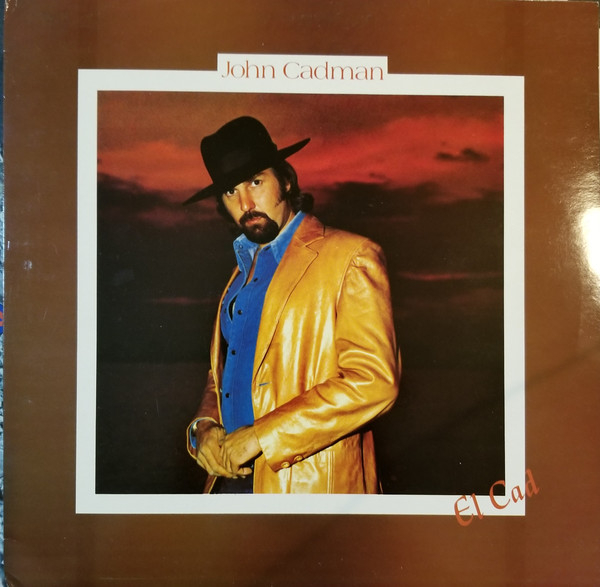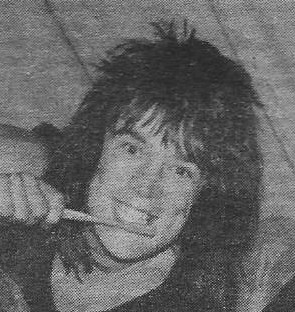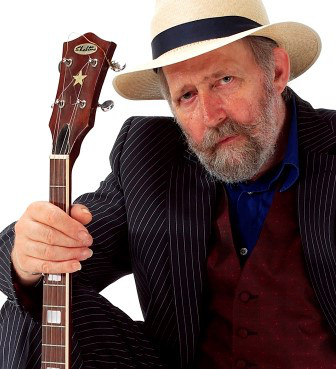
John Cadman
El Cad
Album UK 1983 on Plant Life label
World
Drums / Percussion: Mark Freeman Recorded and produced by Willy Barrett Mastered at Tape One, London, by Jack Adams Sleeve photography by John Sall Layout: Judith Howell A1, A4, A5, B1, B4, B5 and B6 published by Black Eye/Desert Songs (ATV) A3 and B2 published by Plant Life Music Ltd. A2 and B3 N/A El Cad Spanish guitars, electric guitar, bass, drums and percussion are used here in a unique fusion of traditional and contemporary musical styles to create an exciting and rhythmic flamenco-like dance, certainly influenced by the composer's part-Spanish ancestry. Battle Galliard John Dowland (1563-1626), one of the foremost lutenists and composers of the renaissance period, left England - having been refused the post of court musician to Elizabeth I (on religious grounds)- to be appointed Royal Lutenist to the Danish court. This lute solos, in the form of divisions on an ancient and majestic dance, was commissioned by the King, its full title being: 'The Most High and Mightie, Christianus IV, King of Denmark, His Galliard'. Take Me Isaac Albéniz (1890-1909), the distinguished Spanish composer, was by his own admission 'much influenced by the sound and techniques of the guitar', although he did not play or compose for the instrument. Originally a piano solo from 'Suite Espanol', this guitar transcription by John Cadman is given a new and original setting in the form of a duo for guitar and voice, featuring Yvonne Grech. Super Blue John Cadman, in addition to being composer, arranger, and performer, is the author of a comprehensive guitar method, which for the most part deals with orthodox technique. However, this solo - recorded on electric-classical guitar - was originally written for the method as an example in blues style, its title reflecting the extremely 'blued' notes ad staccato bass line. Eclosion Based upon two popular Catalan folk tuned - 'El Testamen de N'Amelia' (as arranged by Miguel Llobert) and 'El Noy de la Mare' -this work opens with a gentle Spanish guitar solo which is suddenly interrupted by a change in tempo together with the introduction of drums and strings, creating a bolero-type movement. This continues and increases in intensity, to end in an anthem-like finale featuring two electrical guitars. Canarios This lively traditional dance of characteristically alternating 6/8 and 3/4 measures originated in the Canary Islands. The well-known melody is here arranged for Spanish Guitar, accompanied by steel-strung acoustic guitar and percussion. Variations on Greensleeves This early English folk tune, sometimes attributed to Henry VIII, has formed the subject matter for numerous compositions throughout the centuries. Beginning with a solo lute arrangement of the theme, this set of variations shows some historical instrumental developments, first by the addition of a harpsichord-like effect, produced on steel-strung classical guitar and cittern. This is followed by the introduction of new thematic material - set on two electric guitars - leading to a jig-like finale suggested by the rhythm of the lute continuo. La Frescabalda Girolamo Frescabaldi (1583-1643), one of Italy's finest composers, indicated his profound commitment to this work by its very title. Originally composed for harpsichord or organ, this solo guitar transcription by John Cadman follows the original form of an air with four variations, displaying a variety of styles and contrapuntal devices typical of the Italian renaissance, before retuning to the sombre and ethereal opening theme. Alhambra Francisco Tárrega (1854-1909) composed numerous works for the guitar, and which have produced many developments in classical guitar technique. This haunting and typically Spanish piece was originally written as a tremelo study - 'Recuerdos de la Alhambra' - but has since earned itself a justifiably popular position in the instrument's concert repertoire. This setting of the solo, announced by the peal of a psaltery, features an accompanying part sung by Yvonne Grech. Jota Aragonessa Although considered something of a technical tour-de-force, this composition is here presented in a light-hearted fashion/ Based upon a traditional flamenco dance - formed from several Spanish fol tunes - it incorporates many sound effects, all preformed on solo guitar, with the exception of a short additional (and questionably appropriate!) vocal by Willy Barrett. Requiem and Extasis Inspired by Eclosion (side one), this lonely and mournful theme - Requiem leads directly into Extasis, which is composed of complex variations around the traditional tune 'Saltarello'. Scored for Spanish guitar, 12-string guitar, citar, and two-drum-kits, this movement has an underlying, insistent moto-perpetuo bass line - often broken by precarious cross-rhythms - leafing to a rhythmic rasquedo passage which brings the work to an aggressive and ecstatic climax.
Musicians
 | John Cadman g, guitar, written by, album by, words by, arranged by |
 | Mark Freeman dr, drums, percussion |
 | Yvonne Grech , vocals |
 | Wild Willy Barrett g, vn, voc, *1950 vocals |
Producers
| Judith Howell layout |
| Jack Adams mastered by |
| John Sall photography, sleeve |
| Wild Willy Barrett producer, recorded by |
Album Tracks
| No | Title | Artist | Composer | Duration |
|---|---|---|---|---|
| 1 | Side One | John Cadman | ||
| 2 | El Cad | John Cadman | 4:12 | |
| 3 | Battle Galliard | John Cadman | John Dowland | 3:25 |
| 4 | Take Me | John Cadman | 5:16 | |
| 5 | Super Blue | John Cadman | 3:13 | |
| 6 | Eclosion | John Cadman | 4:23 | |
| 7 | Side Two | John Cadman | ||
| 8 | Canarios | John Cadman | Gaspar Sanz | 2:06 |
| 9 | Variations On Greensleeves | John Cadman | 4:45 | |
| 10 | La Frescabalda | John Cadman | Girolamo Frescobaldi | 5:23 |
| 11 | Alhambra | John Cadman | 3:56 | |
| 12 | Jota Aragonessa | John Cadman | Francisco Tárrega | 5:55 |
| 13 | Requiem And Extasis | John Cadman | 3:27 |
